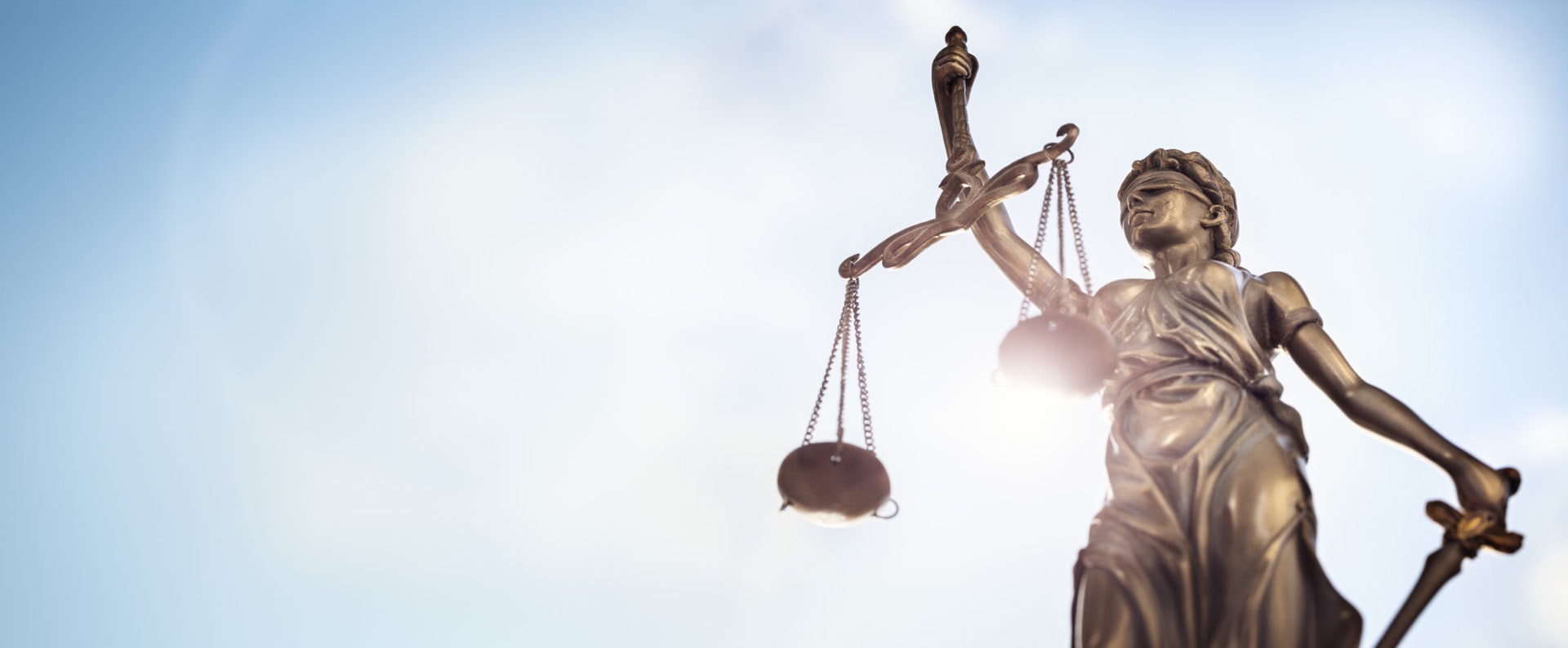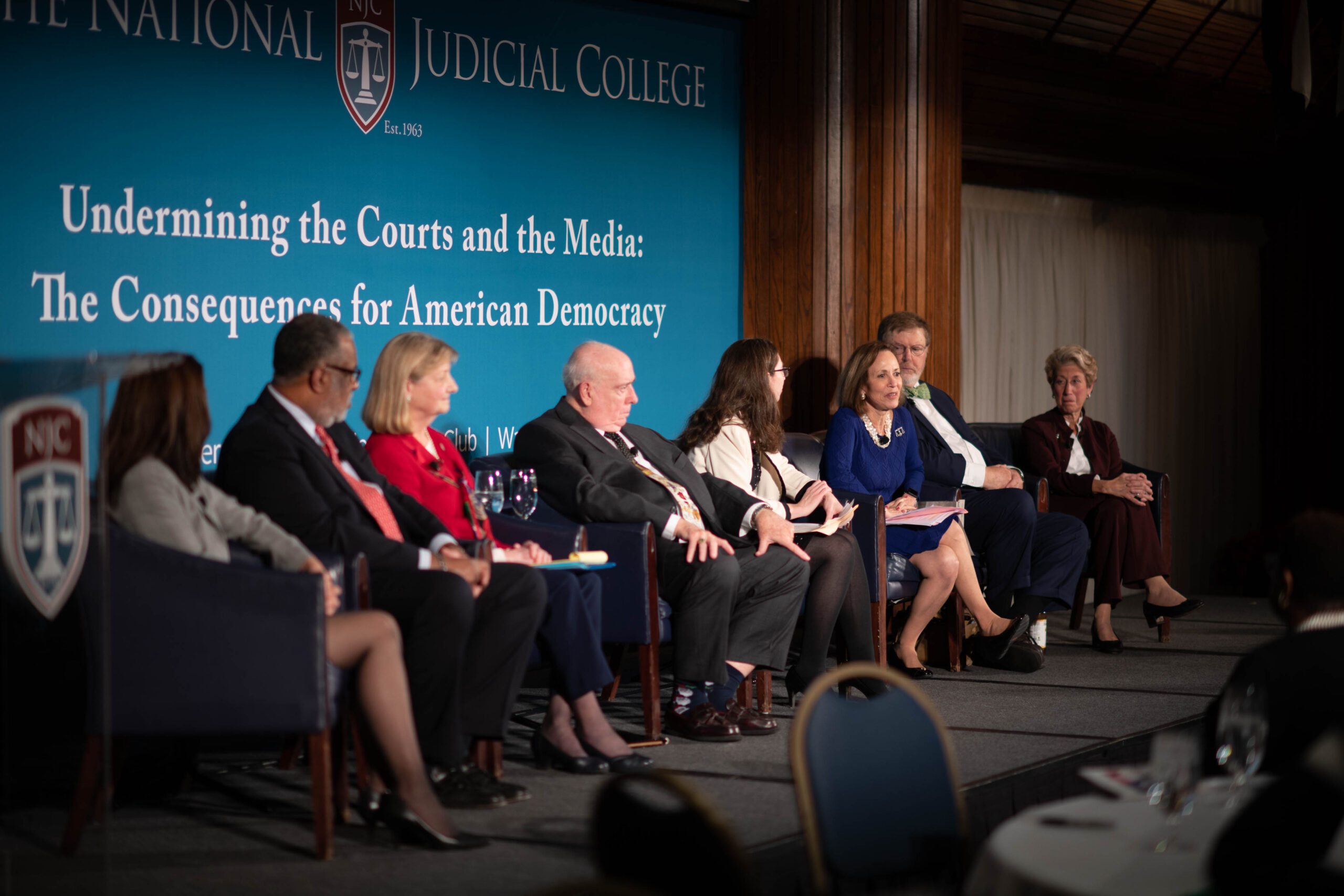
By Judge Benes Z. Aldana (Ret.)
Note: This article first appeared in the fall 2021 issue of The Judges’ Journal, a publication of the American Bar Association Judicial Division. The theme of the issue was “Judging in a Politicized America.”
While much of the public’s attention has focused this year on partisan battles to pass more restrictive voting laws in certain states, you may have missed a feud of a different sort that was being waged in Montana.
Early in 2021, Montana’s legislature passed a law that abolished the state’s Judicial Nomination Commission. The law gave the new governor, and all future governors, unfettered power to fill judicial vacancies between elections (most Montana judges are elected, and all judicial elections are nonpartisan, meaning judges don’t have to disclose political affiliations).
The Montana Supreme Court eventually certified the law as valid under the state’s constitution in a 6–1 ruling. That was the end of the legal challenge.
But what happened in between the legislative debate over the bill and the supreme court’s ruling shows how suspicious or outright hostile relations have become between the judiciary and the areas of government that judges sometimes refer to as the “political branches.” And it’s not just in Montana.
For several years, the Brennan Center for Justice at New York University Law School has tracked bills in state legislatures that would reduce the authority of state courts. The center reported that as of May 14, at least 26 states had introduced 93 bills in 2021 that, in the center’s view, would “politicize or undermine” the independence of state courts. At least 10 had already been signed into law.
In Montana, the law abolishing the Judicial Nominating Commission was viewed as an effort by conservatives to remake what they saw as an activist judiciary and appoint or elect more conservative judges. It wasn’t so much the law that alarmed some observers, however. It was a campaign waged off to the side that appeared aimed at discrediting the judiciary itself.
It all started when state lawmakers got wind of a poll conducted by the supreme court administrator on behalf of the Montana Judges Association. Every judge and justice in the state is a member of the association, and such emailed polls had been conducted in the past. This one asked judges if they approved or disapproved of the proposed change involving the Judicial Nomination Commission.
Some state legislators who heard about the poll were furious. They saw it as political activity aimed at potentially mobilizing opposition to the bill. They wanted to know what the courts were up to. They demanded that the court administrator turn over all emails related to the poll.
The administrator shared the tally from the poll but said she couldn’t turn over all the emails because some of them had been routinely deleted.
Dissatisfied with that response, the lawmakers issued an “investigative subpoena” to the agency responsible for the judiciary’s computer systems. They wanted to see all deleted emails and attachments sent or received by the court administrator during a three-month period.
According to a later supreme court order, the agency transferred several thousand such emails to the legislature before the court administrator had even learned of the subpoena. The lawmakers then began releasing many of the emails to the press.
The supreme court administrator obtained an emergency order to stop the transfer of further emails until the supreme court could consider the matter. The lawmakers then sued to have every justice on the court disqualified from ruling on the matter.
In the end, the justices refused to recuse themselves, and, in a unanimous decision, they ruled that the legislature had overstepped its authority in subpoenaing the emails. The justices said the legislature had no valid legislative interest in seeing those emails.
One might have thought that this dust-up would settle once the supreme court ruled that the law abolishing the Judicial Nominating Commission was constitutional. Not so.
In August, the state’s attorney general petitioned the Montana Supreme Court to reconsider its unanimous decision and let the seizure and reading of the court administrator’s emails resume. In his petition, the attorney general charged that the court had been caught red-handed committing “misconduct or embarrassing malfeasance” that put “our institutions—including the court— . . . on the brink.”
The attorney general may be right about the courts and other democratic institutions being on the brink, but there is scant evidence that judges put them there. And judges may be more worried about the situation than anyone.
Kicking the Third Leg
Each month, the National Judicial College (NJC) emails an unscientific, one-question poll to its thousands of alumni. In October 2018, the poll asked if judges thought judicial independence was threatened. Judicial independence is the concept that the judiciary should be separate from and not influenced by the other branches of government or private or partisan concerns.
Nearly 800 judges responded, and more than 90 percent said yes, they thought judicial independence was threatened. Among those who left comments, the threat mentioned most often was politization of the judiciary, especially in regard to judicial appointments and elections.
Judges wrote about how some elected judges now face the same imperative to court wealthy people and groups for campaign contributions as candidates who are running for high-stakes executive or legislative offices. Others despaired that winning appointment to the bench now requires virtually swearing allegiance to the party in power and passing an ideological litmus test.
Having seen Senate majorities in recent years refuse to even consider judicial nominees of a president from the opposite party, one judge wondered if confirmation of federal judges was even possible anymore unless the nominating president and Senate majority belonged to the same party.
A judge from Iowa reminded fellow judges of the 2010 election that removed three justices of the Iowa Supreme Court. The trio were part of a unanimous decision that legalized same-sex marriage. The campaign to oust them was partly financed by out-of-state interests.
The Iowa judge wrote: “They knew the stakes when they made the decision and, to their credit, they followed the law rather than what the loudest voices wanted. The threat is that the voices of the parties, the voices of precedents, and the voices of current law should not be drowned out by political views and agendas.”
He added, “Our government stability is seated on a three-legged stool. When the executive and legislative legs start kicking at the judicial leg, or the public starts weakening the judicial leg, the whole stool falls.”
The kicking has hardly abated.
President Donald Trump began his administration by sneeringly referring to a federal judge who blocked his executive order on immigration (the so-called Muslim ban) a “so-called judge” after the judge, James Robart of the Western District of Washington, declared the order unconstitutional.
Of course, politically motivated attacks on judges are nothing new, and they have not been exclusive to one party or president. Barack Obama scolded the Supreme Court of the United States at a State of the Union address. George W. Bush denounced “activist judges” who struck down state laws banning same-sex marriage. Bill Clinton excoriated a New York federal judge for a sentencing decision.
Trump took the attacks to a new level.
Toward the end of his term, he publicly condemned the sentence recommended by his own Justice Department in the case of his friend and political ally Roger Stone. Stone had been convicted of obstruction, making false statements, and witness tampering. Trump also attacked the integrity of the judge in the case and said the jury foreman was biased.
Immediately after Trump’s outburst, the Justice Department lightened its sentencing recommendation. Ultimately, Trump pardoned Stone from receiving any punishment at all and did the same for other friends and allies convicted of crimes.
While president, Trump once described the American justice system as a “joke” and the “laughingstock” of the world for guaranteeing due process to a suspect in a terrorism case.
In their 2018 bestseller How Democracies Die, Harvard political scientists Steven Levitsky and Daniel Ziblatt detailed how certain elected leaders from history managed to gradually disintegrate democratic institutions and become dictators. One of the primary warning signs of the transition, they said, was the leader denigrating the judiciary by calling judges biased or unpatriotic.
At one point, Trump declared that all federal judges appointed by his Democratic Party predecessors were not to be trusted and were biased against him. (He likely didn’t know that Robart, who blocked the Muslim ban, was appointed by a Republican, George W. Bush.)
Asked by a reporter about Trump’s blanket condemnation, Chief Justice John Roberts (another Bush appointee) replied, “We do not have Obama judges or Trump judges, Bush judges or Clinton judges. What we have is an extraordinary group of dedicated judges doing their level best to do equal right to those appearing before them.”
Self-Inflicted Wounds
Most judges likely cheered Roberts’s defense of judicial independence and integrity, but the Supreme Court is to blame for wiping away at least two important shields against politicization of the judiciary.
In Lucia v. Securities & Exchange Commission, 138 S. Ct. 2044 (2018), the court ruled 7–2 that SEC administrative law judges (ALJs) were “Officers of the United States” and thus subject to the Appointments Clause of the Constitution. If one applies that decision to other federal agencies (such as the Social Security Administration and the National Labor Relations Board), the standard merit-based civil service process to hire and terminate administrative law judges goes out the window and only the politically appointed heads of those agencies could do the hiring and firing.
That, in effect, would hand the power to hire and fire any ALJ to the boss of all the agency heads, namely the president. Before Lucia, ALJs could be removed only for incompetence or neglect of duty. Now, like any political appointees, they can be let go for virtually any reason or no reason. They could conceivably be warned never to rule against their own agency or they’d be fired.
An earlier Supreme Court decision has had ramifications for elected state court judges.
In Republican Party of Minnesota v. White, 536 U.S. 765 (2002), a 5–4 court struck down a provision of the ABA Model Code of Judicial Conduct that prohibited candidates for judicial office from announcing their views on political and legal issues ahead of an election. As a result, judges can no longer claim that their professional code of ethics bars them from, for instance, filling out a special interest group’s questionnaire on issues.
University of Tennessee law professor and NJC faculty member Penny White wrote about White in the NJC’s magazine, Case in Point, in 2018. She pointed out that Justice Sandra Day O’Connor brought especially relevant experience to the case. O’Connor had been elected to the state senate in Arizona and served as the first woman majority leader in any state legislature. She had been elected a state court judge as well.
Justice O’Connor therefore had to understand that without the shield of the ethics rule, elected judges would be tempted to begin campaigning “on the issues” like any other politician. Her justification for voting with the majority to torpedo that protection, which she expressed in her concurring opinion, was that if states were worried about judicial impartiality, they should stop making judges run for office.
Interestingly, Penny White was herself a victim of judicial politicization. In 1996, she faced an election for retention as a justice of the Tennessee Supreme Court. Six weeks before the vote, the court heard the appeal in a death penalty case. All five justices affirmed the murder conviction, but White was among three justices who reversed the death sentence and remanded the case for a new sentencing. Part of the trio’s reasoning was that the trial judge had wrongly kept the defendant from offering mitigating evidence at sentencing.
Though it was the first appeal of a capital case that Justice White ever heard, she was painted as an anti-death-penalty judge in conservative Tennessee and lost the retention election.
White wrote that her experience has become a cautionary tale for many judges. “Many fear that they, too, might suffer the consequences of an electorate angered by a single decision. Some profess that their goal is to avoid, at all costs, a ‘Penny White experience.’”
The more politicized America becomes, the more realistic that prospect becomes, at least for elected judges. A Harvard Law article from 2012 estimated that about 90 percent of state judges must run for office.
The Resistance
State legislatures passing laws and filing lawsuits seeking to weaken or discredit state courts . . . groups and individuals funding campaigns to unseat judges who stand in the way of their political or ideological aims . . . political litmus tests one must pass to be considered for appointment to the bench . . . federal agencies that can force administrative law judges to rule in the agency’s favor or be fired . . . a president who demeans and tries to discredit judges and due process in the eyes of the public. . . .
Some of these are longstanding threats to judicial independence. Some are new. A recent poll by Quinnipiac University found that voter approval of how the Supreme Court handles its job had fallen to 37 percent, a 15 point drop from little more than a year before and the lowest level since the poll began in 2004. Speculation was that much of the public had reacted negatively to the court’s refusal to block a Texas law sharply restricting abortion rights.
Together, these developments are exerting enormous pressure on judges and justices to veer from their oath to dispense justice fairly and impartially.
An NJC one-question poll in January 2021 asked judges, “Have you ever felt political pressure in connection with one of your decisions?” The majority, 54 percent, said they had, although all who left comments said they had never succumbed to such pressure.
A special course taught annually by the NJC, When Justice Fails: Threats to the Independence of the Judiciary, examines those times in history when the promise of equal justice was broken. A classic example is Nazi Germany.
When the Nazis came to power in Germany, the country had strong judicial traditions and a bench loaded with highly educated judges, yet the Nazis succeeded in thoroughly politicizing the judiciary.
They did it, in part, by playing to the egos of judges, who had lost some of their authority and prestige under the democratic government of the Weimar Republic. In return for higher status, the judges accepted codified antisemitism, totalitarian rule, and mass murder.
If German judges had refused to cooperate with the Nazis (only one resigned), they might not have stopped Hitler. But a principled defiance, such as resigning en masse, might have heartened and inspired others and limited the catastrophic horrors to come.
We should hope and pray that American judges never face such extreme challenges. But if they do, quitting should be the last resort. First, they should fight.
In Federalist No. 78, Alexander Hamilton assured former colonists wary of monarchal rule that the judicial branch envisioned in the Constitution would have “no influence over either the sword or the purse; no direction either of the strength or of the wealth of the society, and can take no active resolution whatever. It may truly be said to have neither force nor will.”
But the judiciary does have a voice. Although the ABA Model Code of Judicial Conduct has long counseled judges to steer clear of expressing opinions on issues that could come before them, the code also compels judges to speak out against efforts to undermine judicial independence.
And some are. In response to the Lucia decision, for instance, some administrative law judges affiliated with the ABA Judicial Division and other organizations have begun advocating for creation of a federal central panel of ALJs. Under such a structure, which exists in many states, the judges would be hired by and housed in an independent agency, which would then dispatch them to different agencies as needed. The goal is to preserve impartiality and prevent a president from stocking hearings with cronies.
The judiciary’s best defense against efforts to discredit it, however, has always been to build public confidence by demonstrating integrity and dispensing justice fairly.
Last year, the NJC launched a monthly series profiling Judicial Heroes & Legends. The first honoree was federal judge Frank M. Johnson, who handed down landmark civil rights rulings in the South. He decided the Rosa Parks bus desegregation case in Alabama in the 1950s. Johnson insisted that he was only doing his job and that his rulings, which drew death threats, were not close calls. The Constitution promised equal treatment, and the laws he struck down contradicted that promise.
The American Judges Association (AJA) Harold V. Froehlich Award for Judicial Courage, named for a Republican congressman who voted to impeach Richard Nixon during the Watergate hearings, recognizes a judge “who makes fair and impartial judgments in accord with the rule of law, exercising independence from personal consequence.” After his vote to impeach Nixon, Froehlich lost his next congressional election in a heavily Republican district, as he suspected he would. He went on to a long career as a judge.
In 2017, the AJA recognized U.S. District Judge Gonzalo P. Curiel with the Froehlich Award for his “dignity, courage and professionalism” in responding to then presidential candidate Donald Trump’s attacks on his character. Trump declared that Curiel could not give him a fair hearing in a lawsuit because of Trump’s own negative comments toward Mexican immigrants. Curiel is of Mexican ancestry but was born in Indiana.
Not only did Curiel refrain from responding in kind to Trump’s taunts, but he later demonstrated his commitment to equal justice in a concrete way. In a lawsuit aimed at blocking construction of a U.S.-Mexico border wall, Curiel ruled in the Trump administration’s favor.
In the aftermath of Trump’s loss in the 2020 presidential election, judges examined more than 60 lawsuits filed by Trump and his allies alleging election fraud. Many of the judges were Republicans. At least eight were appointed by Trump. All rejected the claims for lack of evidence.
Fighting back against efforts to undermine confidence in the courts need not be so dramatic, however. In 2019, the NJC launched a program called Reading & Robes. It features judges, wearing their robes, teaching children about civic responsibilities, including how the justice system is supposed to work. The NJC looks at the program as an investment in a future society with citizens who better understand judicial independence and the rule of law—and will vote to protect those principles.
This civically minded advocacy is essential because the more politically charged American society becomes, the more it needs a justice system that citizens perceive as being—and actually is—immune to corrupting influences.
Benes Aldana is president of The National Judicial College
The Gallup polling organization’s annual Confidence in Institutions survey doesn’t track public confidence in courts as a whole, but since 1973 the share of the public holding a “great deal” or “quite a lot” of confidence in the Supreme Court has ranged from a high of 56 percent (two years in the mid-1980s) to a low of 30 percent in 2014. The figure was 36 percent in 2021 (two points lower than for the presidency).
The criminal justice system as a whole hit a 13-year low in 2021 with only 20 percent of the public reporting a great deal or quite a lot of confidence in it. That was not as bad as Congress (12 percent).
The top instillers of confidence among institutions listed in the poll in 2021 were the military (69 percent great deal/ quite a lot) and small business (70 percent). Science debuted in the poll at 64 percent.


CHICAGO – The American Bar Association Judicial Division announced recently that TheNational Ju...

The National Judicial College is mourning the loss of former faculty member Judge Duane Harves, who passed ...

As the world manages an evolving natural environment, The National Judicial College announced today that it...

Do’s Manage your cases systematically Devise a system that works for you and your organizational...

After 22 years of teaching judges, Tennessee Senior Judge Don Ash will retire as a regular faculty member a...